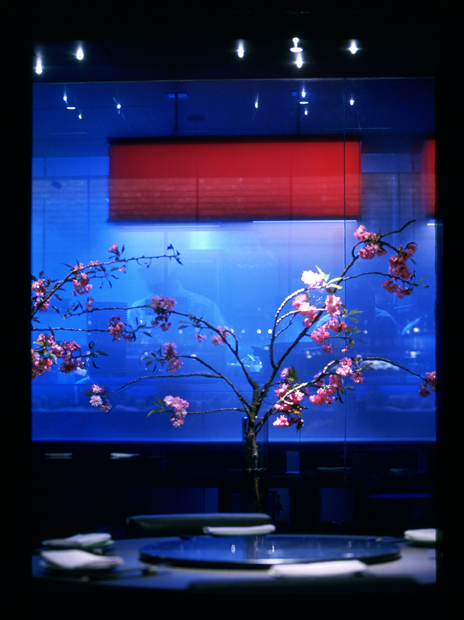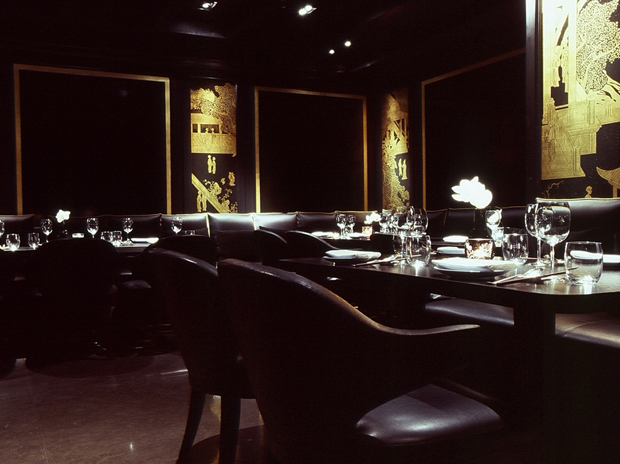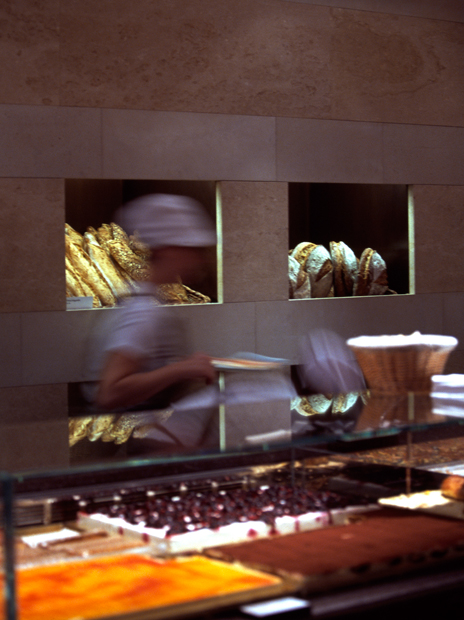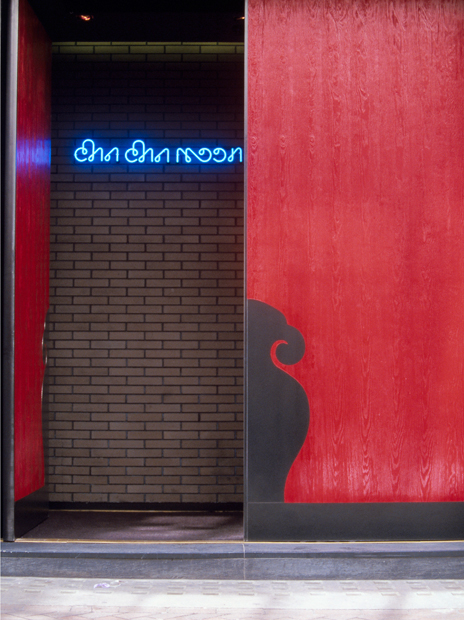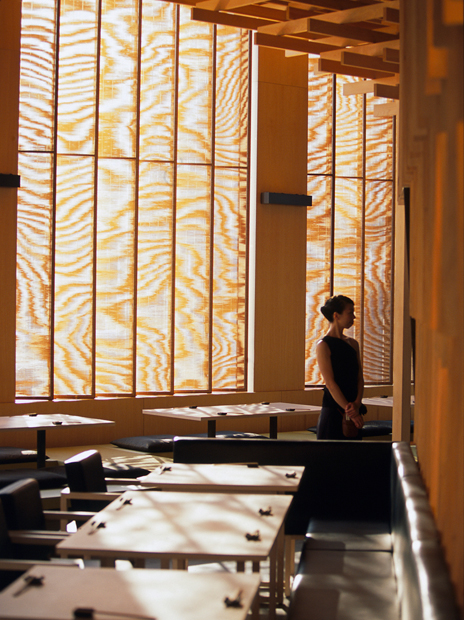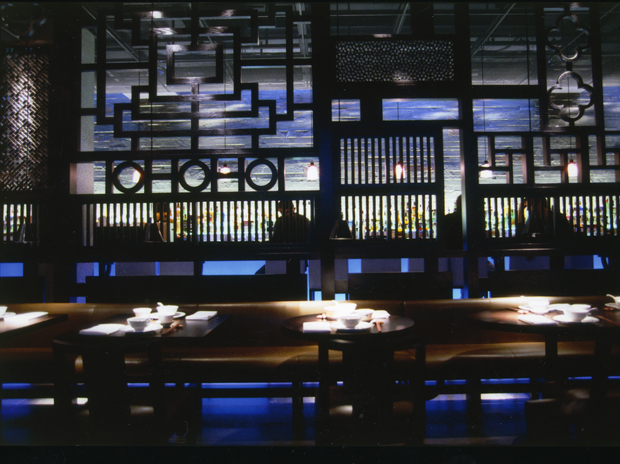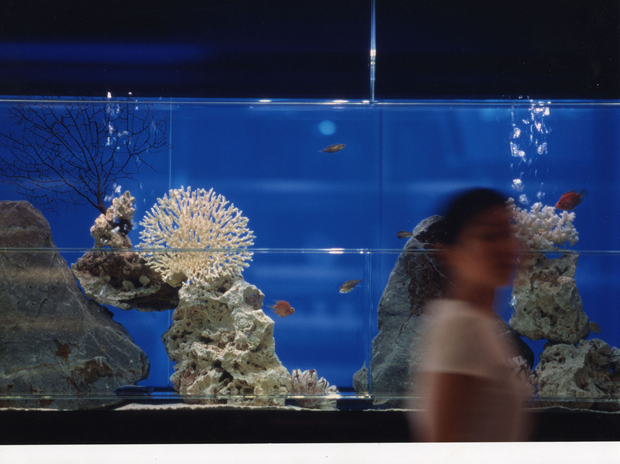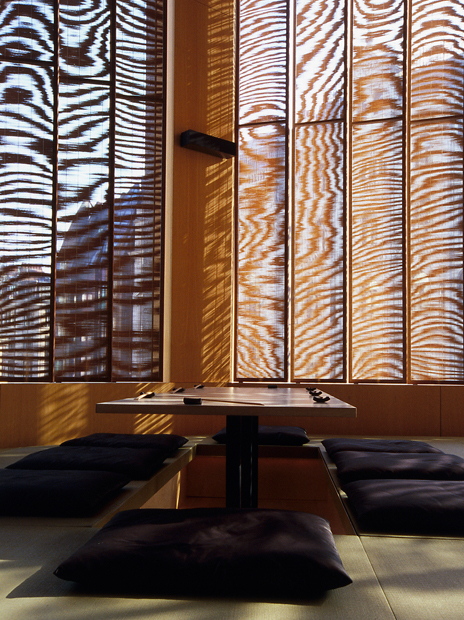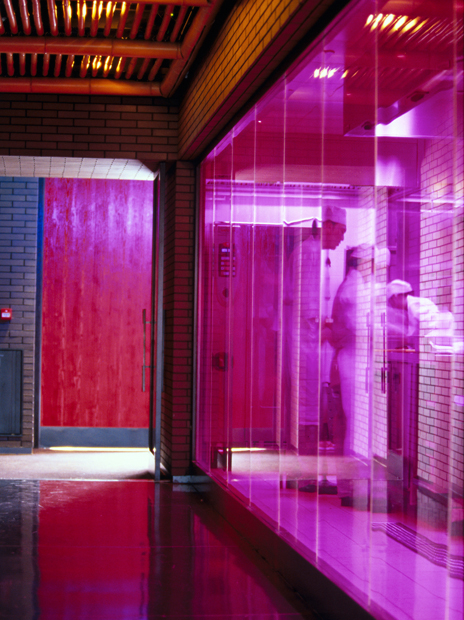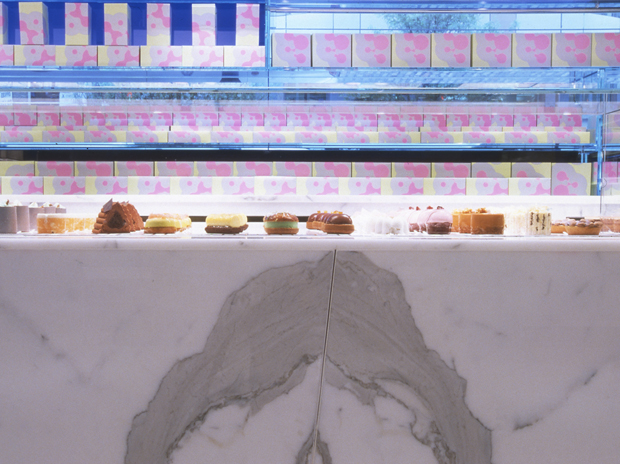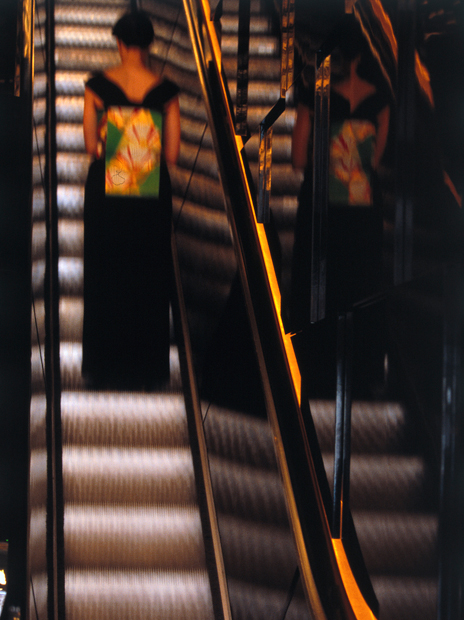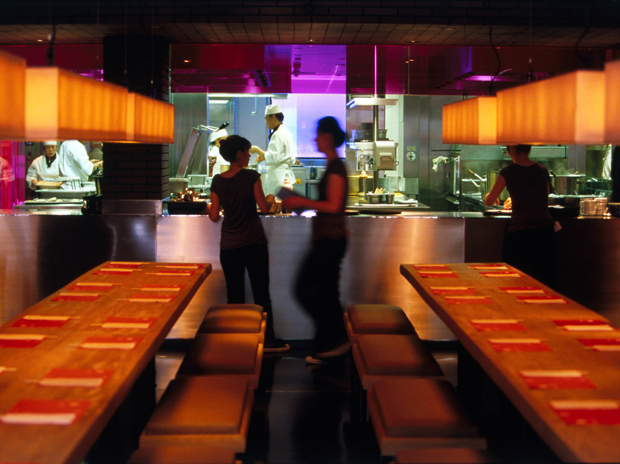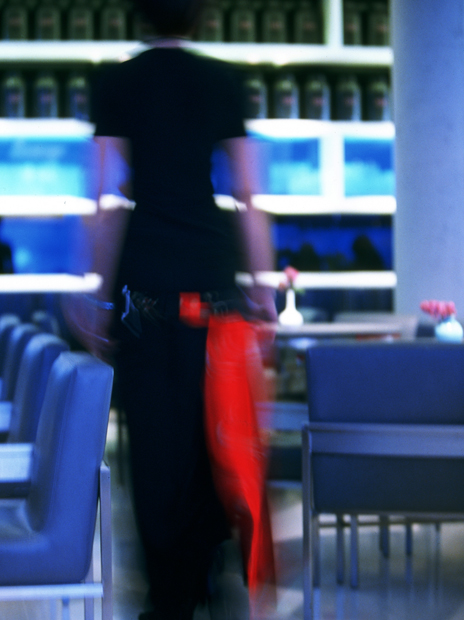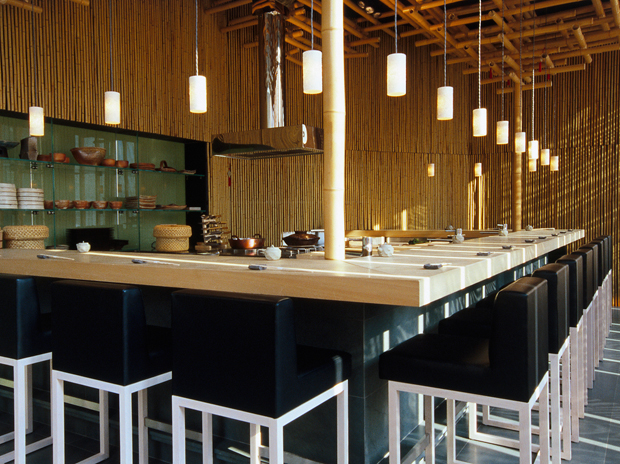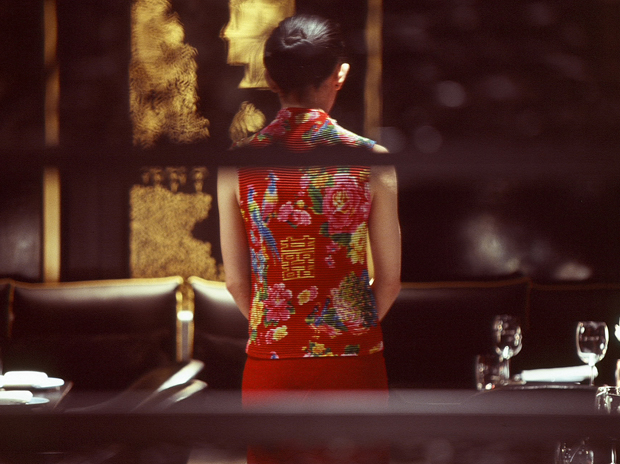Alan Yau is a visionary food and design stylist whose impeccable taste and revolutionary approach to both the dining experience and the marketing of it has made him a brand guru of truly global influence.
His talent is to take a classic eastern culinary tradition and make it more modern and hip whilst at the same time illuminating and intensifying both the elegance and simplicity of the cuisine itself and its culture and traditions.
That he has done and continues to do so with a versatility that straddles the hospitality industry, from super affordable canteen style noodle houses to the most coveted, exclusive and expensive boutique sushi and dim sum bars, is all the more extraordinary.
Yau’s uncanny ability to find the touchstone nexus point between the Japanese eel-slippery concept of authenticity and the mercurial wants and vogues of the people’s hungry is perhaps rooted in the unique cultural vantage point afforded by his background.
Born in the exciting metropolis of Hong Kong, he moved with his family when he was twelve to rural England, King's Lynn in Norfolk, where his father began work managing the kitchens of the local chop suey house. Having spoken no English, the young Yau successfully navigated his way through school and began studying at college. His education, however, was not confined to the classroom, as he immediately began to work with his father setting up the family’s own restaurant and later a second.
On finishing college, in 1990, Yau took a place on the positively utilitarian McDonald’s franchisee trainee program in Hong Kong, where he accrued a wealth of invaluable experience of working in the food industry in one of the world’s fastest cities. On returning to England and its capital at the end of the franchisee program, he immediately set about applying the principals he had acquired in order to bring his unique vision to London’s diners.
That vision entailed high quality East Asian cuisine served with customer oriented efficiency in a beautifully designed canteen style communal eating space that democratized its patrons upwards, so that trendy students happily rubbed shoulders with elegant city workers. Fast casual was the tagline, but so far so complicated, one might have thought.
Yau’s genius lies in the simplicity with which he paints an experience, however, and Wagamama was one of the phenomena of 1990s London, a city to this day pulsating at the vanguard of culinary innovation and quality. Expertly produced Japanese Ramen noodle dishes and delicious sides were served to crowds that queued around the Bloomsbury block - and the Wagamama canteen culture and innovative computerized service system allowed the hordes to saunter and slurp seamlessly through the experience.
That success simply snowballed and the Wagamama brand has never stopped growing, with a forceful global presence - restaurants in sixteen major countries, from Dubai to the USA and Australia. Yau himself sold his interests in the company in 1998 and in almost two years had already turned in a new culinary direction with the opening in 1999 of Busaba Eathai, an equally accessible Thai canteen concept that was based around not only communal seating but also the Thai tradition of sharing dishes. Having been sold in 2008, Busaba Eathai looks set to go on to conquer the world, with thirty outlets set to open globally by 2013.
Not content with the elevating the concept of affordable eating to the status of highest common denominator, Yau then set his sights altogether higher. Hakkasan opened in 2000, with all of the groundbreaking excitement that a new Millennium could muster, and this time it was his native Chinese cuisine that was in for the Alan Yau treatment. What had previously had the tendency to drift into tourist trap pastiche or dumb-down its flavors for lubricated English palettes was returned triumphantly to its rightful place at the top table of international cuisine.
Chinese cooking is focused on the beauty of balancing simplicity with itself and in Hakkasan, London could boast a world-class exponent of that delicate art, to which flocked the cream of society in London and beyond. With sumptuous interpretations of classic Chinese dishes and an atmosphere rivaled only in the capital’s most exclusive fine dining venues, Hakkasan was given, amongst a host of other prestigious awards including “Oriental Restaurant of the Year”, a Michelin star in 2003 - the first Chinese restaurant to ever do so.
Ultra-chic all-day dim sum bar and teahouse Yauatcha followed Hakkasan, opening to critical acclaim in Soho in 2004 and receiving its own Michelin star - and Yau’s second - nine months later. With these two high class venues, Yau had taken Chinese cuisine and with it conquered the top tier of fine dining. In fact his two flagship restaurants have both appeared on the list of the world’s top fifty restaurants, with Hakkasan featuring every year from 2004 to 2007 and reaching as high as number 14. Both restaurants have also garnered recognition for their design - by Christian Liaigre - with Hakkasan winning the ‘Best Design’ award at the Time Out Eating and Drinking Awards in 2002 and Yauatcha voted most innovative design by Condé Nast Traveler Magazine in 2007.
Continuing his modest pattern of creation, consolidation and commercialization, he sold both Hakkasan and Yauatcha restaurants, and the Hakkasan brand is already well on the way to becoming a global luxury dining institution in its own right with future openings in Mumbai and New York.
In 2007, ever-searching for new directions, Yau opened Sake no hana in London’s plush St James Street, which is already doing for high end Japanese cuisine what Hakkasan and Yauatcha did for its Chinese counterpart. Not content with this he also opened Cha Cha Moon, an inspired Chinese noodle bar that delves again into the affordable quality fast food market and Princi, a small Italian café and lunch spot in Soho.
Once more Alan Yau’s name and those of the true cultural and culinary fusions for which he is so rightly revered are bubbling up into the mainstream by trendy word of trendiest mouth from London’s trendiest corners.
- Ben Stewart
Alan Yau´s Former and Present Restaurants
Website: www.alanyau.cn
Wagamama
Address: Various Locations
Website: www.wagamama.com
Busaba Eathai
Address: Various Locations
Website: www.busaba.com
Hakkasan
Address: 8 Hanway Place
London, W1T 1HD
Tel: 0 20 7927 7000
Website: www.hakkasan.com
Hakkasan Miami
Address: 4441 Collins Avenue
Miami Beach, 33140
Tel: 786 276 1388
Website: www.hakkasan.com
Yauatcha
Address: 15 Broadwick Street
London, WF1 0DL
Tel: 0 20 7494 8888
Website: www.yauatcha.com
Sake no hana
Address: 23 St James Street
London, SW1A 1HA
Tel: 0 20 7925 8999
Website: www.sakenohana.com
Cha Cha Moon
Address: 15-21 Ganton Street
London, W1F 9BN
Tel: 0 20 7297 9800
Website: www.chachamoon.com
Princi
Address: 135 Wardour Street
London, W1F 0UT
Tel: 0 20 7478 8888
Website: www.princi.co.uk
His talent is to take a classic eastern culinary tradition and make it more modern and hip whilst at the same time illuminating and intensifying both the elegance and simplicity of the cuisine itself and its culture and traditions.
That he has done and continues to do so with a versatility that straddles the hospitality industry, from super affordable canteen style noodle houses to the most coveted, exclusive and expensive boutique sushi and dim sum bars, is all the more extraordinary.
Yau’s uncanny ability to find the touchstone nexus point between the Japanese eel-slippery concept of authenticity and the mercurial wants and vogues of the people’s hungry is perhaps rooted in the unique cultural vantage point afforded by his background.
Born in the exciting metropolis of Hong Kong, he moved with his family when he was twelve to rural England, King's Lynn in Norfolk, where his father began work managing the kitchens of the local chop suey house. Having spoken no English, the young Yau successfully navigated his way through school and began studying at college. His education, however, was not confined to the classroom, as he immediately began to work with his father setting up the family’s own restaurant and later a second.
On finishing college, in 1990, Yau took a place on the positively utilitarian McDonald’s franchisee trainee program in Hong Kong, where he accrued a wealth of invaluable experience of working in the food industry in one of the world’s fastest cities. On returning to England and its capital at the end of the franchisee program, he immediately set about applying the principals he had acquired in order to bring his unique vision to London’s diners.
That vision entailed high quality East Asian cuisine served with customer oriented efficiency in a beautifully designed canteen style communal eating space that democratized its patrons upwards, so that trendy students happily rubbed shoulders with elegant city workers. Fast casual was the tagline, but so far so complicated, one might have thought.
Yau’s genius lies in the simplicity with which he paints an experience, however, and Wagamama was one of the phenomena of 1990s London, a city to this day pulsating at the vanguard of culinary innovation and quality. Expertly produced Japanese Ramen noodle dishes and delicious sides were served to crowds that queued around the Bloomsbury block - and the Wagamama canteen culture and innovative computerized service system allowed the hordes to saunter and slurp seamlessly through the experience.
That success simply snowballed and the Wagamama brand has never stopped growing, with a forceful global presence - restaurants in sixteen major countries, from Dubai to the USA and Australia. Yau himself sold his interests in the company in 1998 and in almost two years had already turned in a new culinary direction with the opening in 1999 of Busaba Eathai, an equally accessible Thai canteen concept that was based around not only communal seating but also the Thai tradition of sharing dishes. Having been sold in 2008, Busaba Eathai looks set to go on to conquer the world, with thirty outlets set to open globally by 2013.
Not content with the elevating the concept of affordable eating to the status of highest common denominator, Yau then set his sights altogether higher. Hakkasan opened in 2000, with all of the groundbreaking excitement that a new Millennium could muster, and this time it was his native Chinese cuisine that was in for the Alan Yau treatment. What had previously had the tendency to drift into tourist trap pastiche or dumb-down its flavors for lubricated English palettes was returned triumphantly to its rightful place at the top table of international cuisine.
Chinese cooking is focused on the beauty of balancing simplicity with itself and in Hakkasan, London could boast a world-class exponent of that delicate art, to which flocked the cream of society in London and beyond. With sumptuous interpretations of classic Chinese dishes and an atmosphere rivaled only in the capital’s most exclusive fine dining venues, Hakkasan was given, amongst a host of other prestigious awards including “Oriental Restaurant of the Year”, a Michelin star in 2003 - the first Chinese restaurant to ever do so.
Ultra-chic all-day dim sum bar and teahouse Yauatcha followed Hakkasan, opening to critical acclaim in Soho in 2004 and receiving its own Michelin star - and Yau’s second - nine months later. With these two high class venues, Yau had taken Chinese cuisine and with it conquered the top tier of fine dining. In fact his two flagship restaurants have both appeared on the list of the world’s top fifty restaurants, with Hakkasan featuring every year from 2004 to 2007 and reaching as high as number 14. Both restaurants have also garnered recognition for their design - by Christian Liaigre - with Hakkasan winning the ‘Best Design’ award at the Time Out Eating and Drinking Awards in 2002 and Yauatcha voted most innovative design by Condé Nast Traveler Magazine in 2007.
Continuing his modest pattern of creation, consolidation and commercialization, he sold both Hakkasan and Yauatcha restaurants, and the Hakkasan brand is already well on the way to becoming a global luxury dining institution in its own right with future openings in Mumbai and New York.
In 2007, ever-searching for new directions, Yau opened Sake no hana in London’s plush St James Street, which is already doing for high end Japanese cuisine what Hakkasan and Yauatcha did for its Chinese counterpart. Not content with this he also opened Cha Cha Moon, an inspired Chinese noodle bar that delves again into the affordable quality fast food market and Princi, a small Italian café and lunch spot in Soho.
Once more Alan Yau’s name and those of the true cultural and culinary fusions for which he is so rightly revered are bubbling up into the mainstream by trendy word of trendiest mouth from London’s trendiest corners.
- Ben Stewart
Alan Yau´s Former and Present Restaurants
Website: www.alanyau.cn
Wagamama
Address: Various Locations
Website: www.wagamama.com
Busaba Eathai
Address: Various Locations
Website: www.busaba.com
Hakkasan
Address: 8 Hanway Place
London, W1T 1HD
Tel: 0 20 7927 7000
Website: www.hakkasan.com
Hakkasan Miami
Address: 4441 Collins Avenue
Miami Beach, 33140
Tel: 786 276 1388
Website: www.hakkasan.com
Yauatcha
Address: 15 Broadwick Street
London, WF1 0DL
Tel: 0 20 7494 8888
Website: www.yauatcha.com
Sake no hana
Address: 23 St James Street
London, SW1A 1HA
Tel: 0 20 7925 8999
Website: www.sakenohana.com
Cha Cha Moon
Address: 15-21 Ganton Street
London, W1F 9BN
Tel: 0 20 7297 9800
Website: www.chachamoon.com
Princi
Address: 135 Wardour Street
London, W1F 0UT
Tel: 0 20 7478 8888
Website: www.princi.co.uk
Alan Yau





